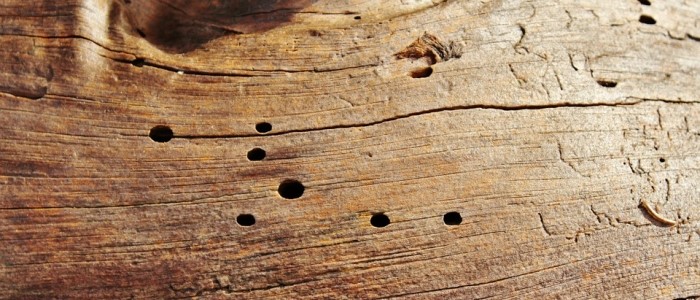Wood is one of the most popular and fashionable construction materials to be found in our homes. It’s no surprise then that we have the desire to take all measures to ensure a long life of wood and over the years have developed ways to care for and preserve it.
In this guide, we explore modern wood preservatives, their superiority to CCA and their relative strengths and weaknesses.
Potential threats
Timber has three main enemies – wood-boring insects, termites and fungi. And just some of these potential threats can present themselves in our own homes by exposure to moisture, direct sunlight, and infestation by various insects (e.g. woodworm).
Fortunately, these invasive threats can be prevented by protecting the timber with many kinds of natural wood preservatives and synthetic wood treatments. So, let’s take a look at a few examples of effective wood preservatives available on the market today.
Wood preservatives
Chromate Copper Arsenate: Chromate Copper Arsenate (CCA) is a pesticide containing chromium, copper and arsenic that protects wood against termites, fungi and other pests that can degrade or threaten the integrity of wood products.
It has been used as a wood preservative pesticide since the 1940s. However, there are some concerns that over time, the arsenic constituents, may leach out of the treated timber, according to the United States’ Environment Protection Agency (EPA) website. Long-term exposure to arsenic could pose serious health risks.
While the restrictions to CCA were a precautionary move and CCA-treated timber is still in widespread use in many countries, we’ll take a look at some alternative heavy-duty preservatives.

Oli-borne
The most common varieties of oil-borne preservatives include creosote and pentachlorophenol.
Creosote have been historically used as a treatment for outdoor wood structures to prevent rot – such as railroad ties and bridgework. The method of treating wood involves placing timber in a sealed chamber and applying a vacuum to remove air and moisture. The wood is then pressure-treated to impregnate it with creosote.
Pentachlorophenol (PCP) is an organochlorine compound that can be used as both a pesticide and a disinfectant. To preserve wood, PCP can be applied by spraying, brushing, dipping and soaking the wood or by pressure process method. This involves placing wood in a pressure-treating vessel where it is immersed in PCP and then subjected to applied pressure.
Water-borne
While water-borne preservatives are usually among the cheapest options available to consumers, their greatest drawback is that due to the presence of water in such preservatives, their application can and often will lead to swelling and/or warping of the wood to be treated – especially if it is already porous.
Water-borne preservatives include alkaline copper quaternary compounds (ACQ), copper azole (CuAz), ammoniacal copper zinc arsenate (ACZA), copper citrate, and copper HDO (CuHDO).

New technology
A notable trend in the development of modern wood preservatives points in the direction of more environmentally friendly options, such as wood acetylation and heat treatments.
While we’ve already covered the benefits of heat treatments to wood in detail here, when timber is heated to extreme temperatures, and without the presence of oxygen, it causes the chemical makeup of the species to alter and consequently makes it inedible to microbes and insects.
Rather than being infused into wood like pressured-treatments, acetylation chemically modifies wood. Acetylation reduces moisture in the cell wall to the point where there just isn’t enough to support fungal degradation. Not only is acetylated wood stronger, it resists termites because it’s harder and drier than unmodified wood.
Accoya is based upon acetylated wood technology, which we proudly stock at International Timber.
How we do it
At International Timber we offer a number of treatments to prevent an infestation and protect timber. Just one example is the organic preservation system Osmose Protim. This protects the timber against rot and decay and is used in construction projects that are required to Class UC1, UC2 and UC3 for roof timbers, timber framing, internal and external joinery and other timber projects that are above ground level.
And you?
Hopefully the above has given you an introduction to the best types of wood preservatives, but if you’ve got any more questions or simply want to find out the best treatment options for your project, don’t hesitate to give us a shout on Twitter or get in touch directly today.
